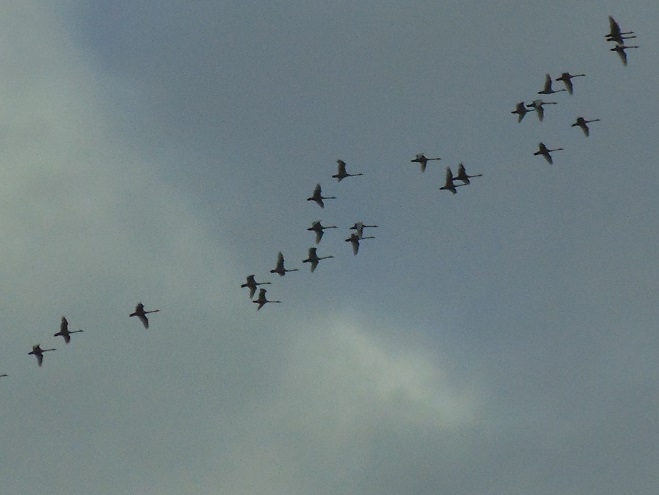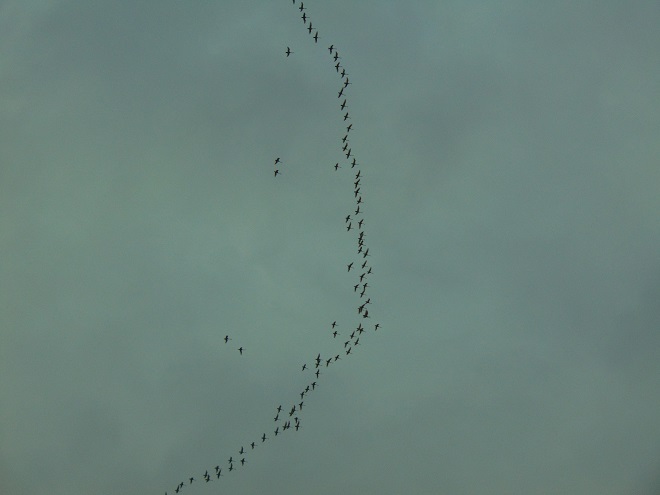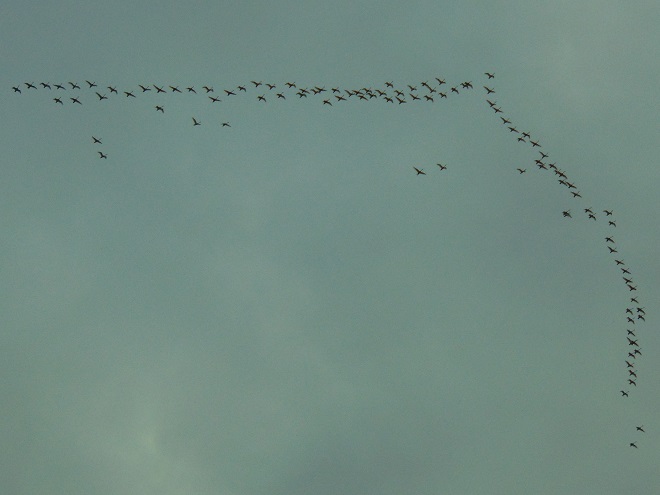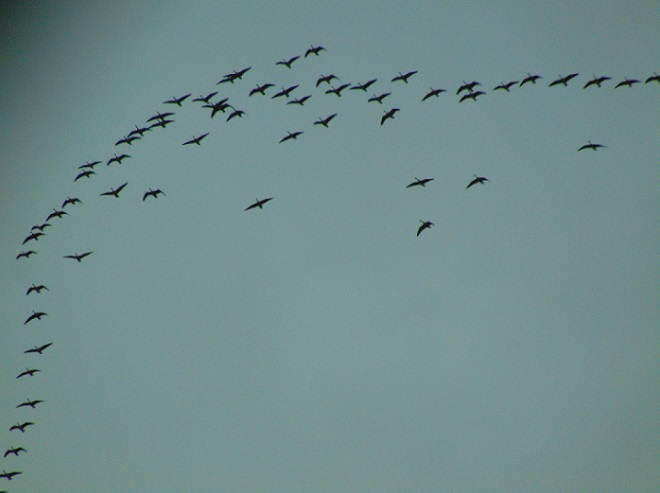There was a hint of what was to come. If you were out and about before dawn this morning, you may have been lucky enough to hear them passing by high overhead. It was 5:30 A.M. when I opened the door and was greeted by that distinctive nasal whistle. Stepping through the threshold and into the cold, I peered into the starry sky and saw them, their feathers glowing orange in the diffused light from the streets and parking lots below. Their size and snow-white plumage make Tundra Swans one of the few species of migrating birds you’ll ever get to visibly discern in a dark moonless nighttime sky.
The calm air at daybreak and through the morning transitioned to a steady breeze from the south in the afternoon. Could this be it? Would this be that one day in late February or the first half of March each year when waterfowl (and other birds too) seem to take advantage of the favorable wind to initiate an “exodus” and move in conspicuous numbers up the lower Susquehanna valley on their way to breeding grounds in the north? Well, indeed it would be. And with the wind speeding up the parade, an observer at a fixed point on the ground gets to see more birds fly by.
In the late afternoon, an observation location in the Gettysburg Basin about five miles east of Conewago Falls in Lancaster County seemed to be well-aligned with a northwesterly flight path for migrating Tundra Swans. At about 5:30 P.M., the clear sky began clouding over, possibly pushing high-flying birds more readily into view. During the next several hours, over three thousand Tundra Swans passed overhead, flocks continuing to pass for a short time after nightfall. There were more than one thousand Canada Geese, the most numerous species on similar days in previous years. Sometimes on such a day there are numerous ducks. Not today. The timing, location, and conditions put Tundra Swans in the spotlight for this year’s show.






Other migrants moving concurrently with the waterfowl included Ring-billed Gulls, Herring Gulls (6+), American Robins (50+), Red-winged Blackbirds (500+), and Common Grackles (100+).
Though I’ve only seen such a spectacle only once during a season in recent years, there certainly could be another large flight of ducks, geese, or swans yet to come. The breeze is forecast to continue from southerly directions for at least another day. Keep you eyes skyward, no matter where you might happen to be in the lower Susquehanna valley. These or other migratory species may put on another show, a “big day”, just for you.
